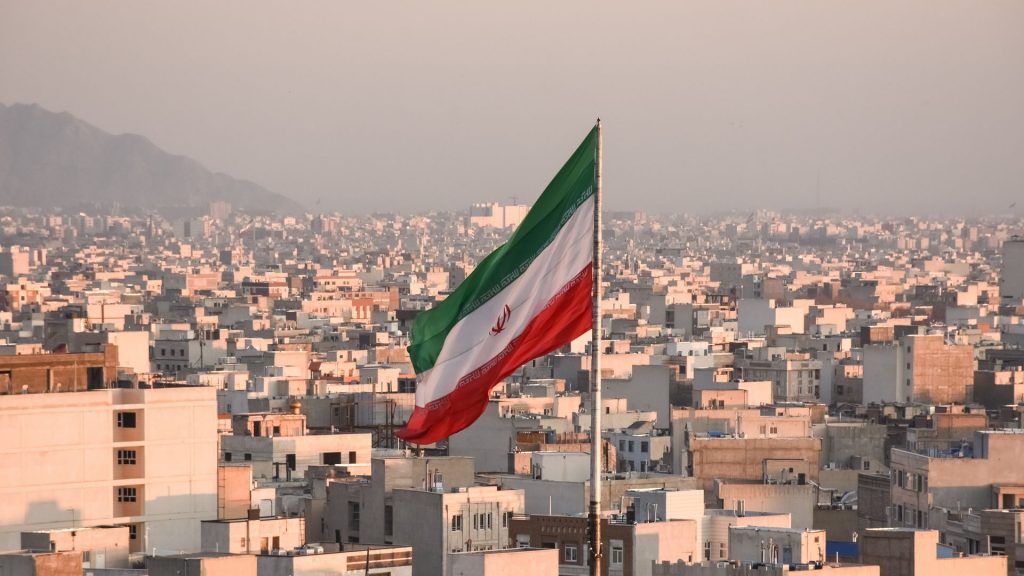US personnel partially evacuated from embassy in Baghdad as tensions rise

The U.S. is reducing the number of nonessential personnel in the Middle East because of a heightened regional security risk. The State Department issued a partial evacuation order Wednesday, June 11, which applies to all nonessential personnel at the U.S. Embassy in Baghdad, based on its latest risk assessment and commitment to keeping “Americans safe both at home and abroad.”
The State Department also allowed the voluntary evacuation of nonessential workers and family members from Bahrain and Kuwait. However, the U.S. Embassy in Kuwait issued a statement that said, in part, it “has not changed its staffing and posture and remains fully operational,” according to The Associated Press.
U.S. Secretary of Defense Pete Hegseth also “authorized the voluntary departure of military dependents from locations” across the Middle East. U.S. Central Command released a statement that said it “is monitoring the developing tension in the Middle East.”
U.S. officials did not offer details on the specific risk that led to the partial and voluntary evacuations.
“The State Department regularly reviews American personnel abroad, and this decision was made as a result of a recent review,” White House spokesperson Anna Kelly said.
Negotiations at a standstill
The Middle East has seen an increased threat level as Israel’s war against Hamas in Gaza continues. Similarly, negotiations between the United States and Iran over Tehran’s nuclear program are currently at a standstill.
The U.S. is pushing for Iran to pull back on its nuclear program and has offered to lift some economic sanctions if the Islamic Republic complies with that request. Tehran has repeatedly claimed its nuclear program is for peaceful purposes.
Two U.S. officials, speaking anonymously to The Associated Press, reported that Iran and the U.S. plan to hold further talks over the weekend in Oman. However, those officials now acknowledge it is increasingly unlikely the talks will occur.
Trump threatens force against Iran
President Donald Trump has vowed to use military force against Tehran if talks falter, and has expressed a pessimistic view about the two nations reaching an agreement.
“They seem to be delaying, and I think that’s a shame,” Trump told the New York Post’s “Pod Force One” on Monday, June 9. “I’m less confident now than I would have been a couple of months ago. Something happened to them.”
Iran pushes back
Tehran has blamed the U.S. for rising tensions, and Iranian officials wrote on social media that Trump’s threats won’t change anything.
“Threats of overwhelming force won’t change the facts,” the post read. “Iran is not seeking a nuclear weapon, and U.S. militarism only fuels instability.”
Iranian Defense Minister Gen. Aziz Nasirzadeh told reporters on Wednesday that he is hopeful negotiations with the U.S. will be fruitful, but acknowledged the Islamic Republic was ready to respond with force if necessary.
“If conflict is imposed on us, the opponent’s casualties will certainly be more than ours, and in that case, America must leave the region, because all its bases are within reach,” Nasirzadeh said. “We have access to them, and we will target them in the host countries without hesitation.”
International Atomic Energy Agency weighs censure of Iran
The escalating tensions come as the Board of Governors at the International Atomic Energy Agency weighs whether to approve a measure that would censure Tehran. That may lead to U.N. sanctions on Iran through a stipulation in Tehran’s 2015 nuclear deal with global powers, which remains valid through October. Trump pulled the U.S. out of the deal in his first term.
Before U.S. officials issued voluntary evacuation orders for some Americans, the United Kingdom Maritime Trade Operations — run by the British navy in the Middle East — alerted ships in the region, stating it had “become aware of increased tensions within the region which could lead to an escalation of military activity having a direct impact on mariners.”
It warned of heightened risks in the Persian Gulf, the Gulf of Oman and the Strait of Hormuz. The warning did not specifically name Tehran, although Iran has previously attacked and seized ships along those routes.





